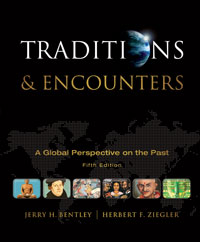1 A) Sumerians who migrated from Mesopotamia to Persia. B) Babylonians who migrated from Mesopotamia to Persia. C) Indo-Europeans who migrated from Anatolia to Iran. D) Indo-Europeans who migrated from central Asia to Persia. E) None of these answers is correct. 2 A) expert agriculturalists; good at irrigation and rice cultivation B) expert archers; frequently raided the wealthy lands of Mesopotamia C) descendants of nomadic peoples; pastoralists, culturally close to the Aryans D) rulers of the largest empire the world had ever seen E) descendants of the Greeks; related to Alexander of Macedon 3 A) His contemporaries called him "the Shepherd" because of the region he came from. B) His conquests laid the foundation of the first Persian empire. C) He conquered Babylon in a swift campaign. D) He ruled from his palace in Pasargadae. E) All these answers are correct. 4 A) Cyrus. B) Cambyses. C) Darius. D) Xerxes. E) Zarathustra. 5 A) established lines of communication and centralized administration. B) forced the peoples to speak only Persian and believe only in the Persian religion. C) used imperial spies to control the conquered masses. D) decentralized their administration. E) All these answers are correct. 6 A) six months for caravans. B) ninety days for caravans. C) two weeks for Marathon runners. D) one week for imperial couriers. E) one year for merchants. 7 A) the rebellions of Mesopotamia and Egypt against the Achaemenid overlord. B) the rebellions of the Greek city-states, fighting for their independence. C) the wars between Alexander of Macedon and the Achaemenid empire. D) the series of civil wars that occurred within the Achaemenid empire. E) None of these answers is correct. 8 A) his army outnumbered the Persian army. B) he proclaimed himself the heir to the Achaemenid rulers. C) his army was well disciplined, was well armed, and used sophisticated tactics. D) he was popular with the people of the empire. E) All these answers are correct. 9 A) they abandoned the Achaemenid systems of administration and communication. B) as foreigners, they were opposed by native Persians. C) they were challenged by the Greeks. D) they were not able to resist the military pressure of the Islamic empire. E) None of these answers is correct. 10 A) had a centralized government. B) were semi-nomadic people. C) had well-trained forces of heavily armed cavalry. D) portrayed themselves as restorers of Persian traditions. E) were pressured by the Roman empire. 11 A) the Roman army. B) the Islamic army. C) the Sassanid army. D) a revolt from within the empire. E) None of these answers is correct. 12 A) undermined the position of the old warrior elite. B) came to share power and influence with warriors and clan leaders. C) were well educated. D) included a corps of translators. E) All these answers are correct. 13 qanat ) was undertaken becauseA) a scarcity of land meant that there was no room for normal irrigation techniques. B) there was an overabundance of slave labor that needed to be utilized. C) water was scarce, and underground canals could keep water from evaporating. D) it was the least labor-intensive way to irrigate. E) there was no agriculture surplus in the empire. 14 A) often came from the ranks of the free who went into debt. B) could not marry other slaves at will. C) were often prisoners of war or people who had rebelled against imperial authorities. D) provided much of the manual labor on construction projects. E) All these answers are correct. 15 A) long-distance trade. B) the herding of domestic animals. C) manufactured goods. D) slavery. E) agriculture. 16 A) linking the lands from India to Egypt into a vast commercial zone. B) standardizing coinage. C) cities establishing banks to facilitate commercial activities. D) relative political stability. E) All these answers are correct. 17 A) an emperor. B) a prophet. C) a magi. D) a monotheist. E) None of these answers is correct. 18 A) the cosmic conflict between Ahura Mazda and Angra Mainyu B) the idea that individual souls would undergo future judgment C) ascetic renunciation of the world in favor of a future heavenly existence D) the idea that the forces of good would ultimately prevail E) a belief in six lesser deities 19 A) Zoroastrians were converting to Islam. B) it was outlawed by the Persian government. C) it was outlawed by Islamic conquerors. D) more and more people turned to belief in Christianity. E) None of these answers is correct. 20 A) Buddhism B) Christianity C) Manichaeism D) Hinduism E) Zoroastrianism





